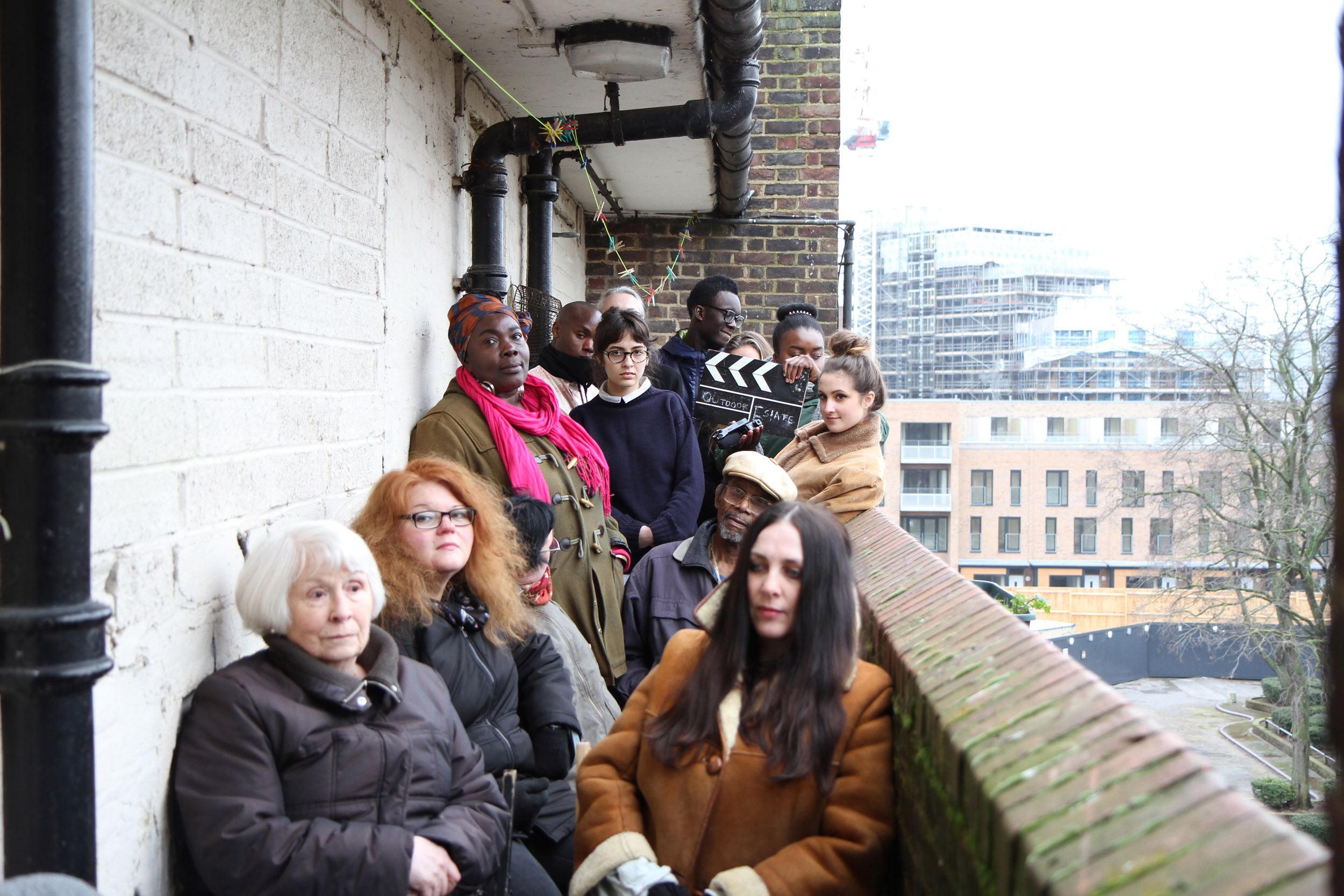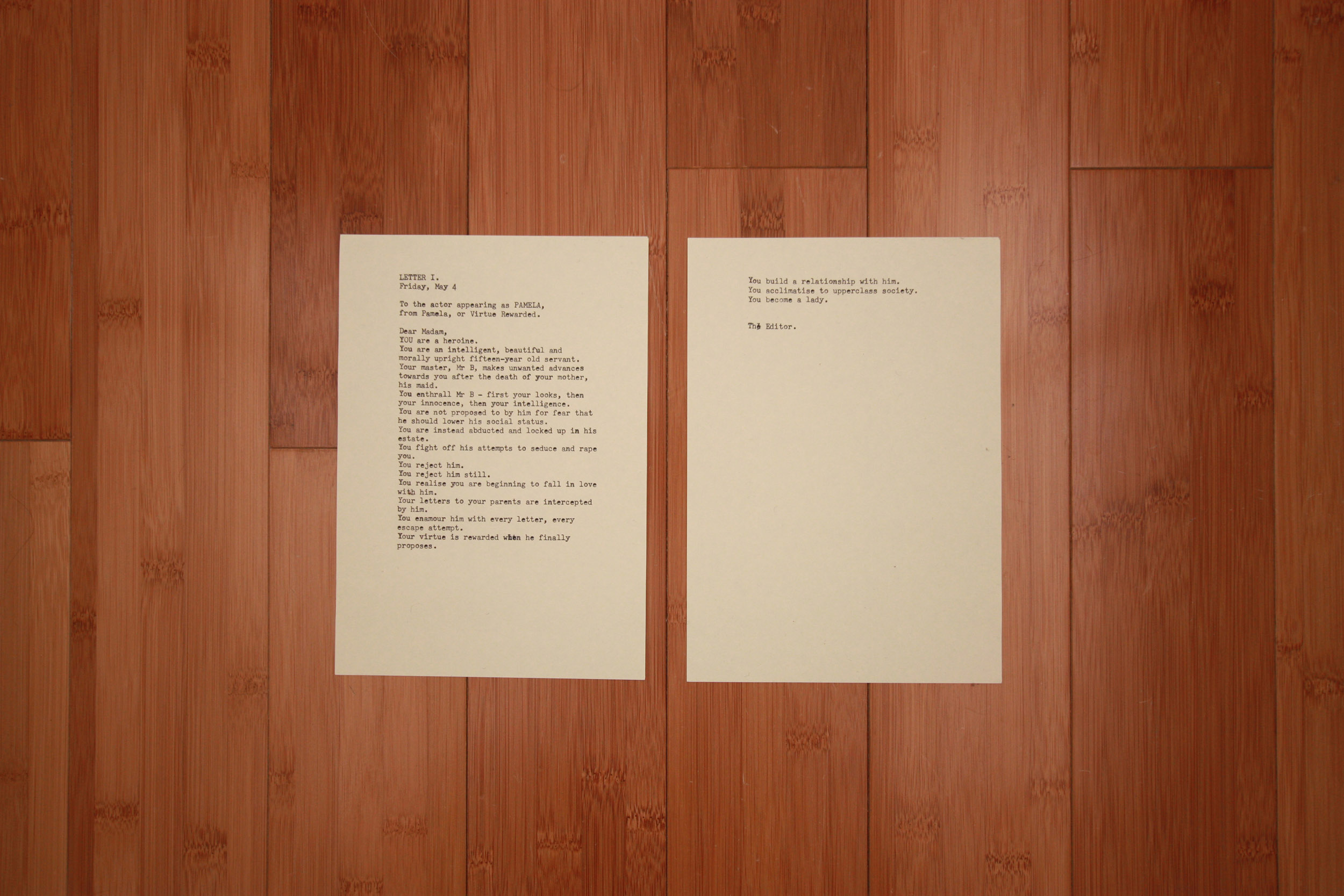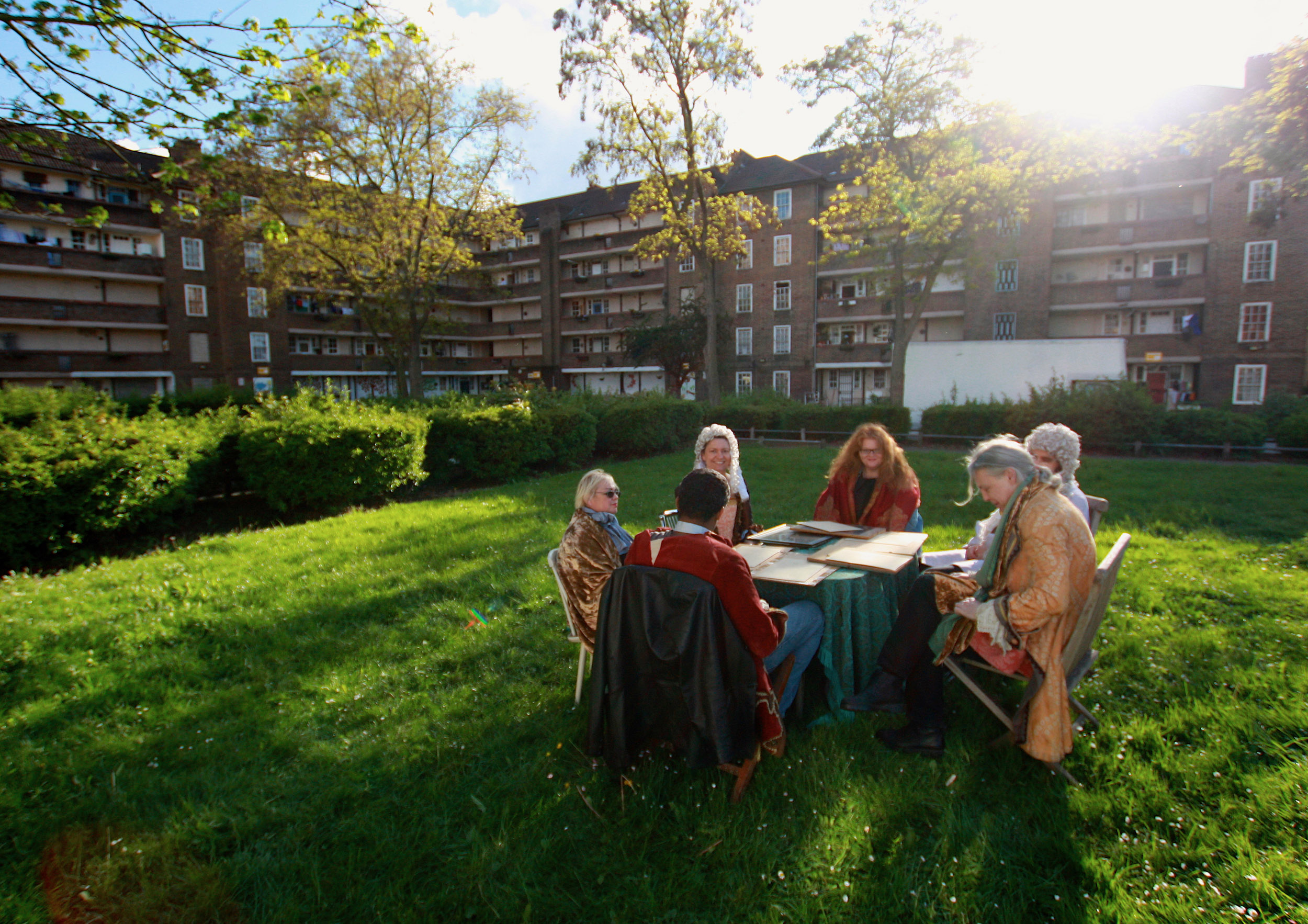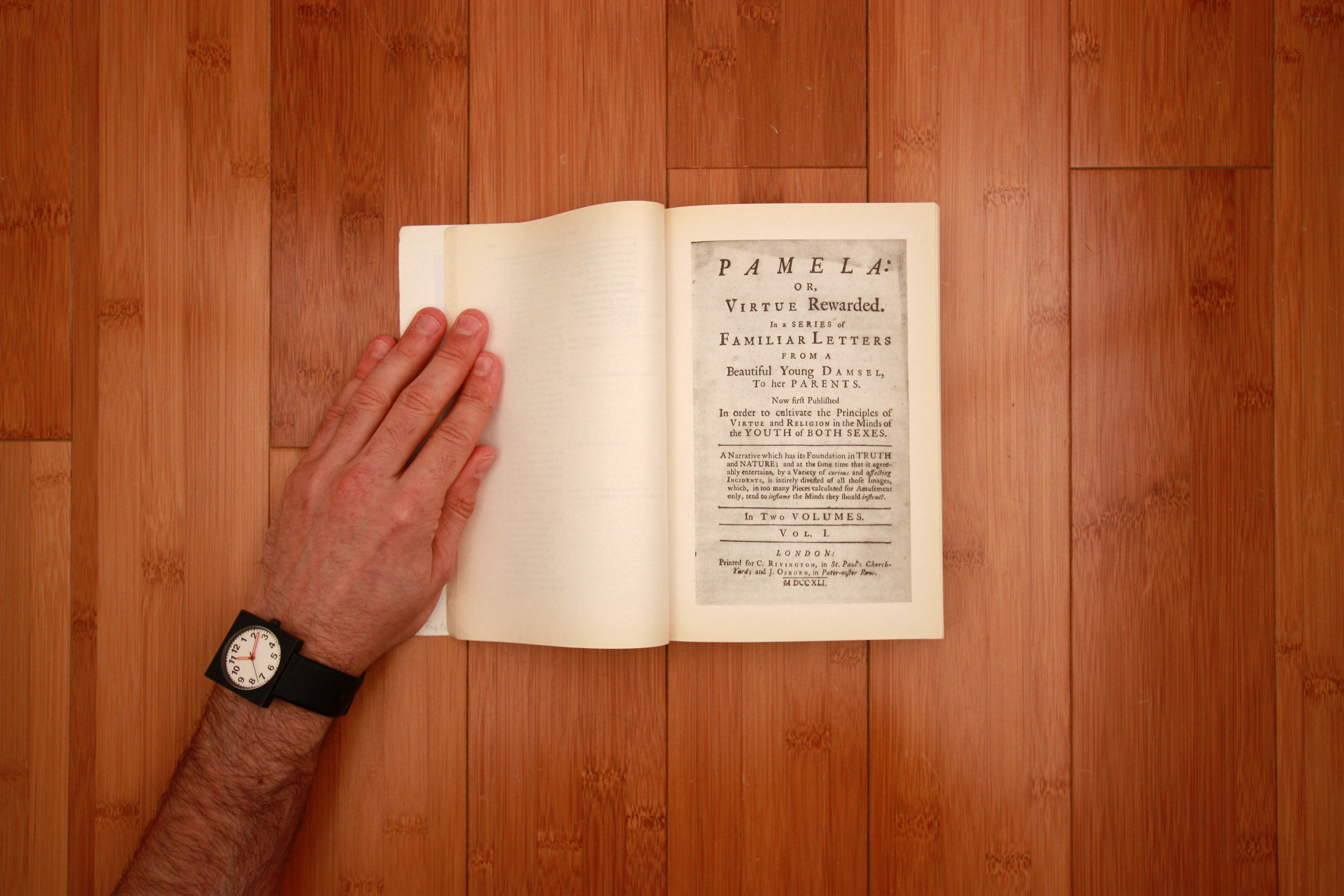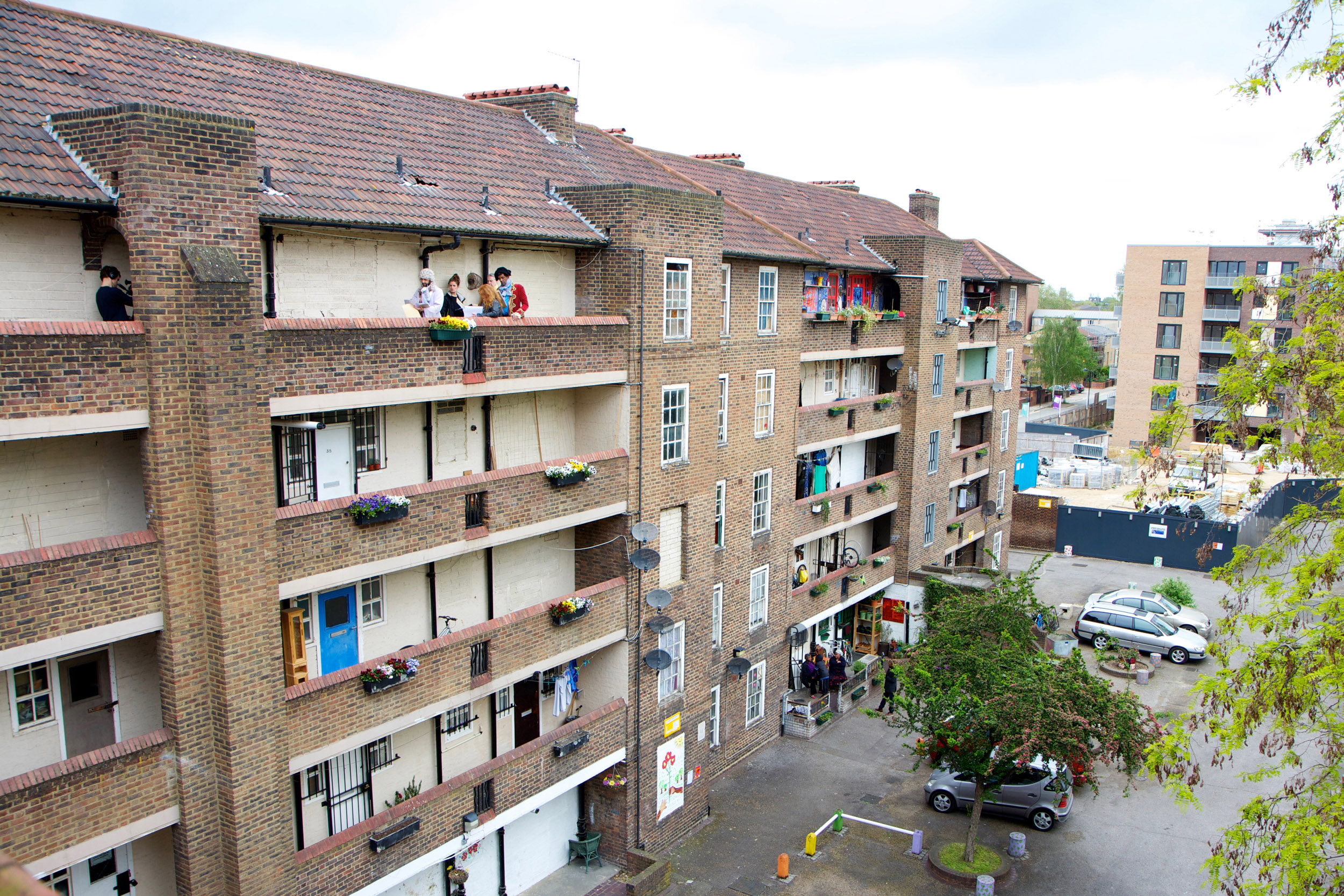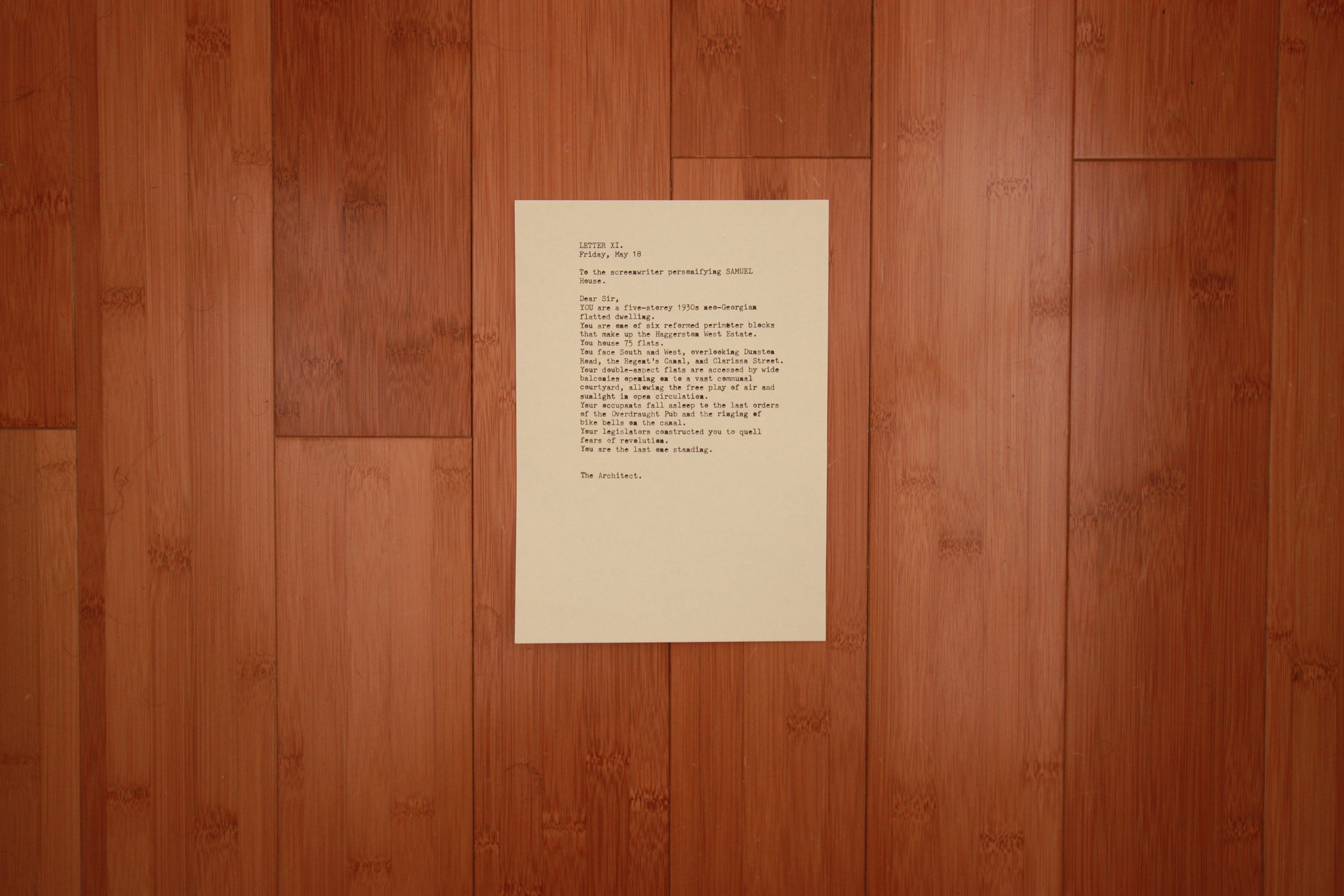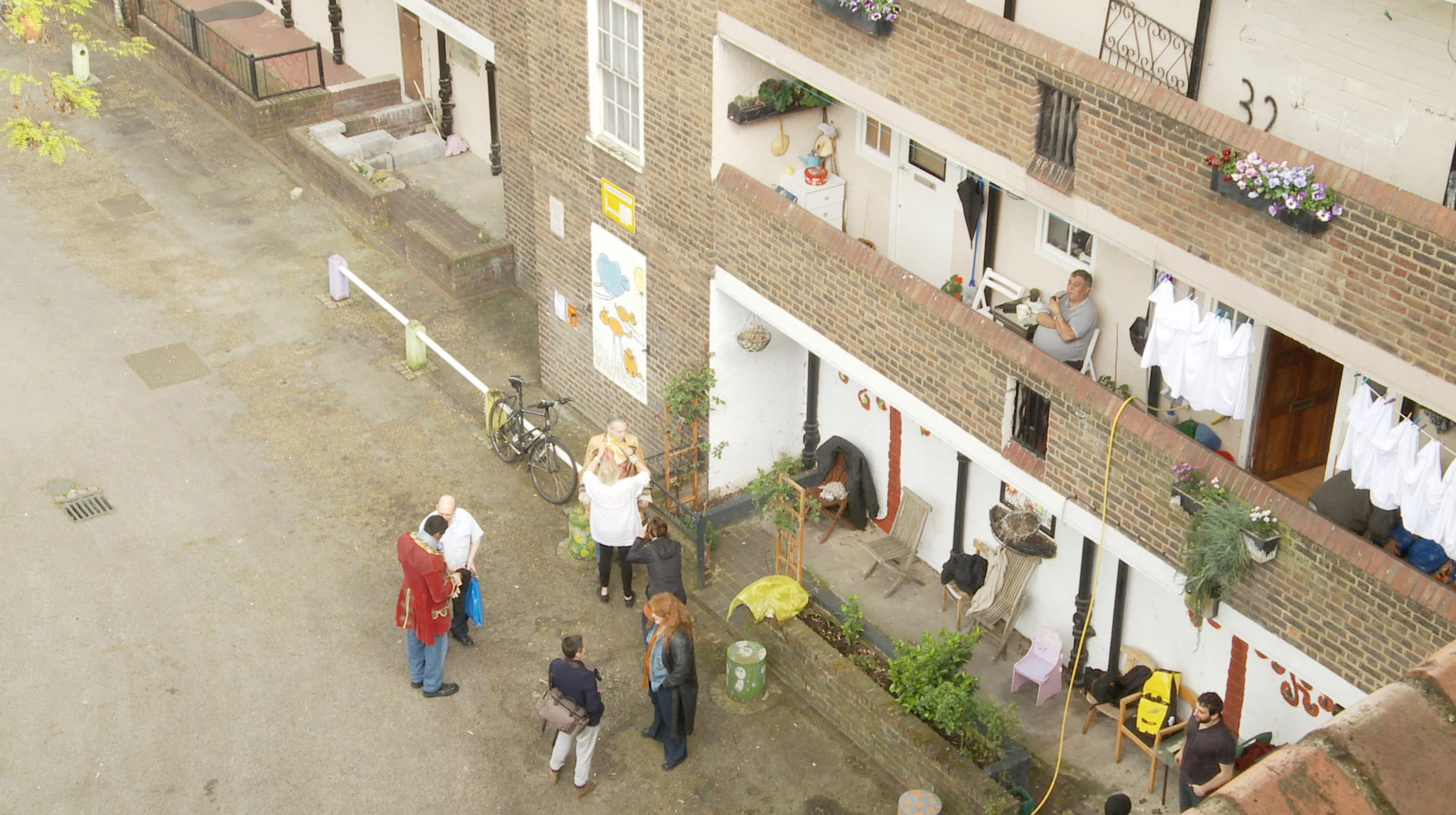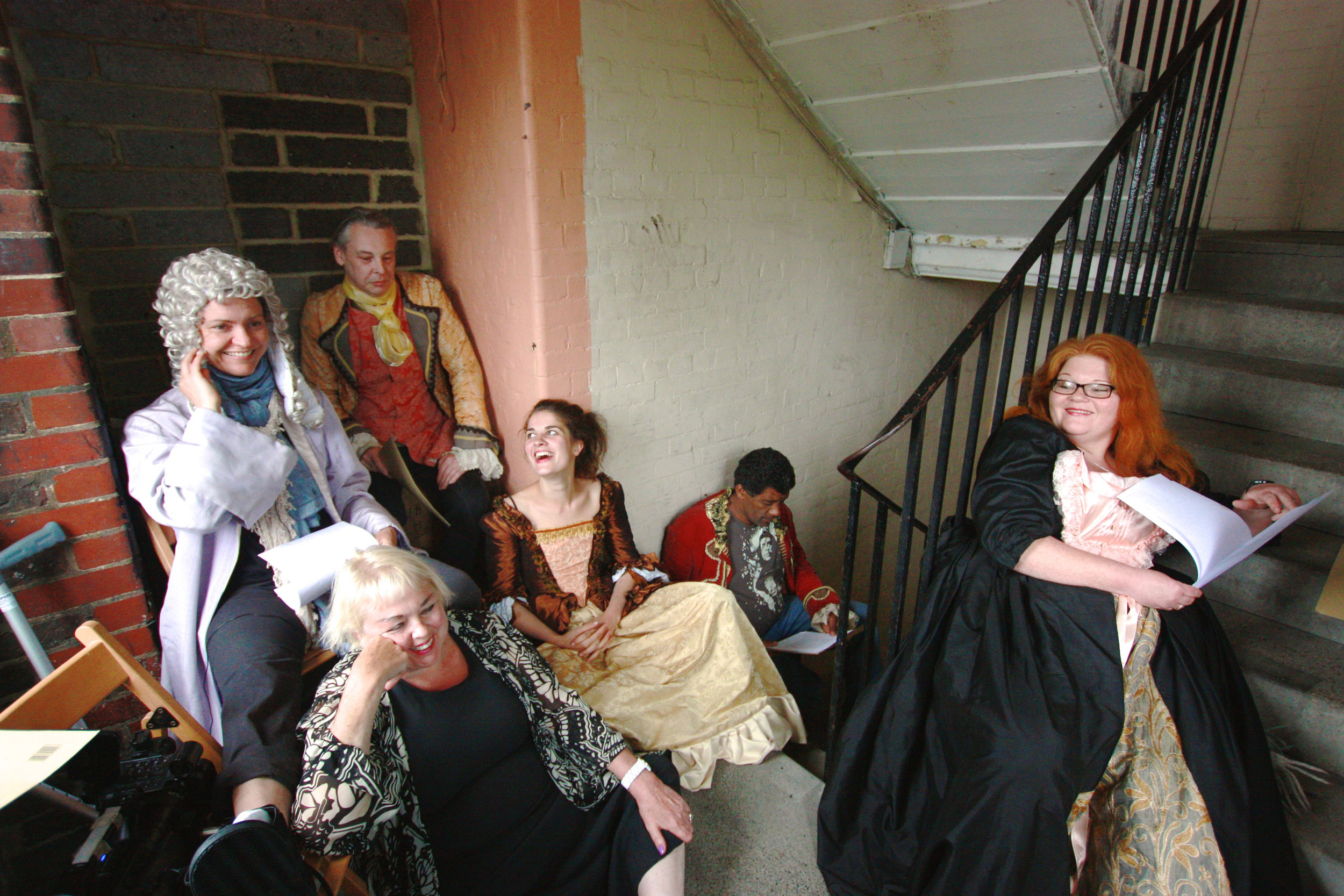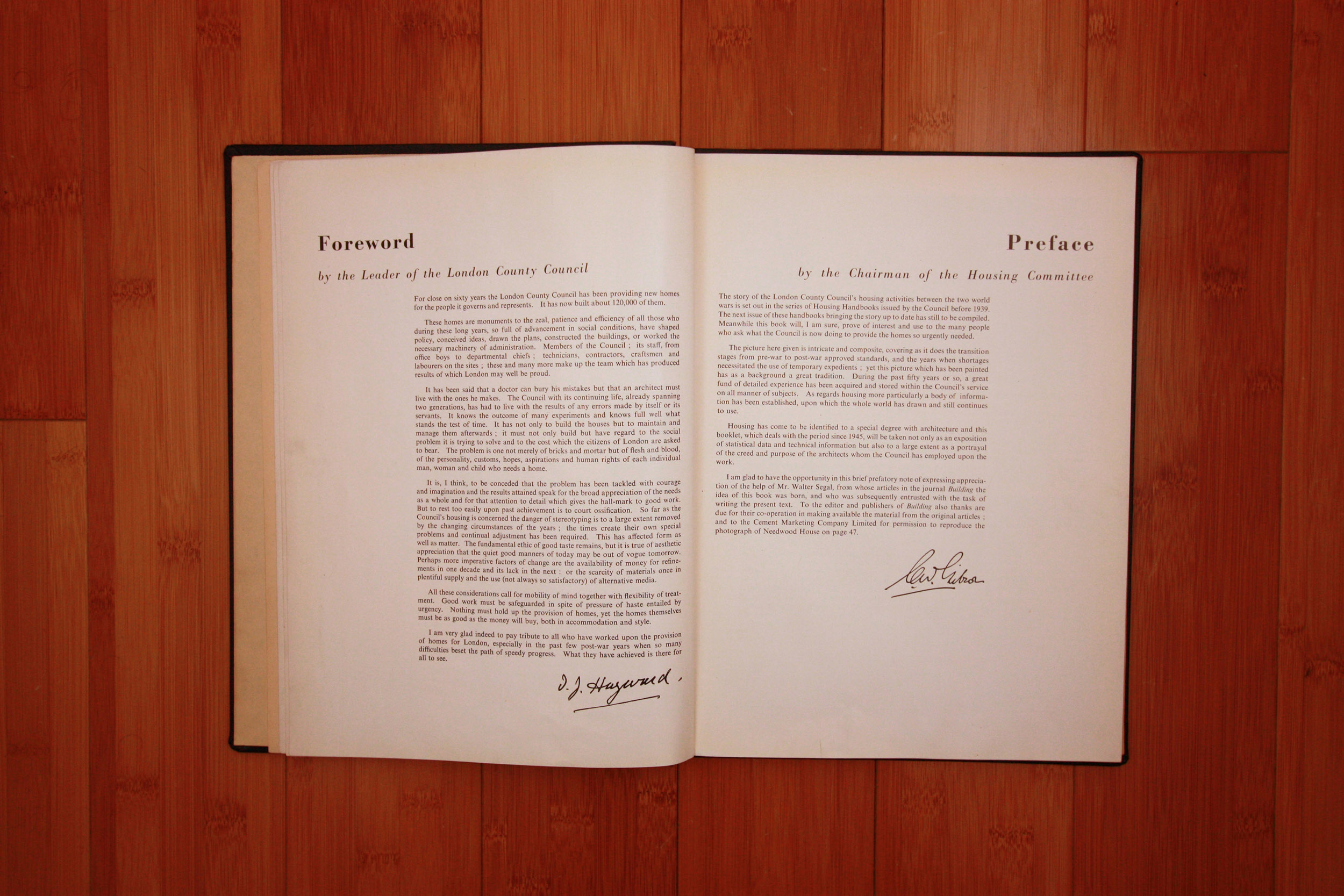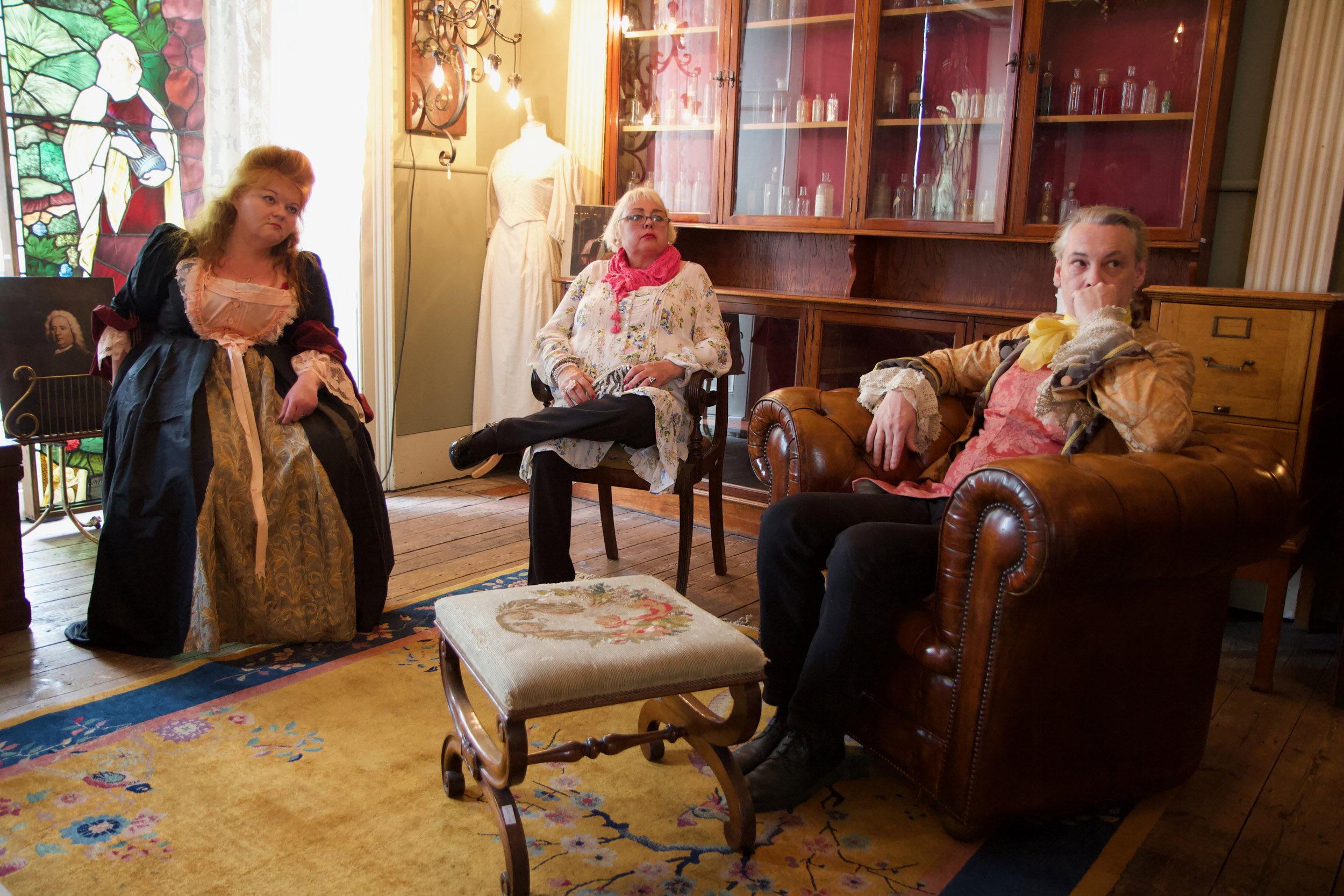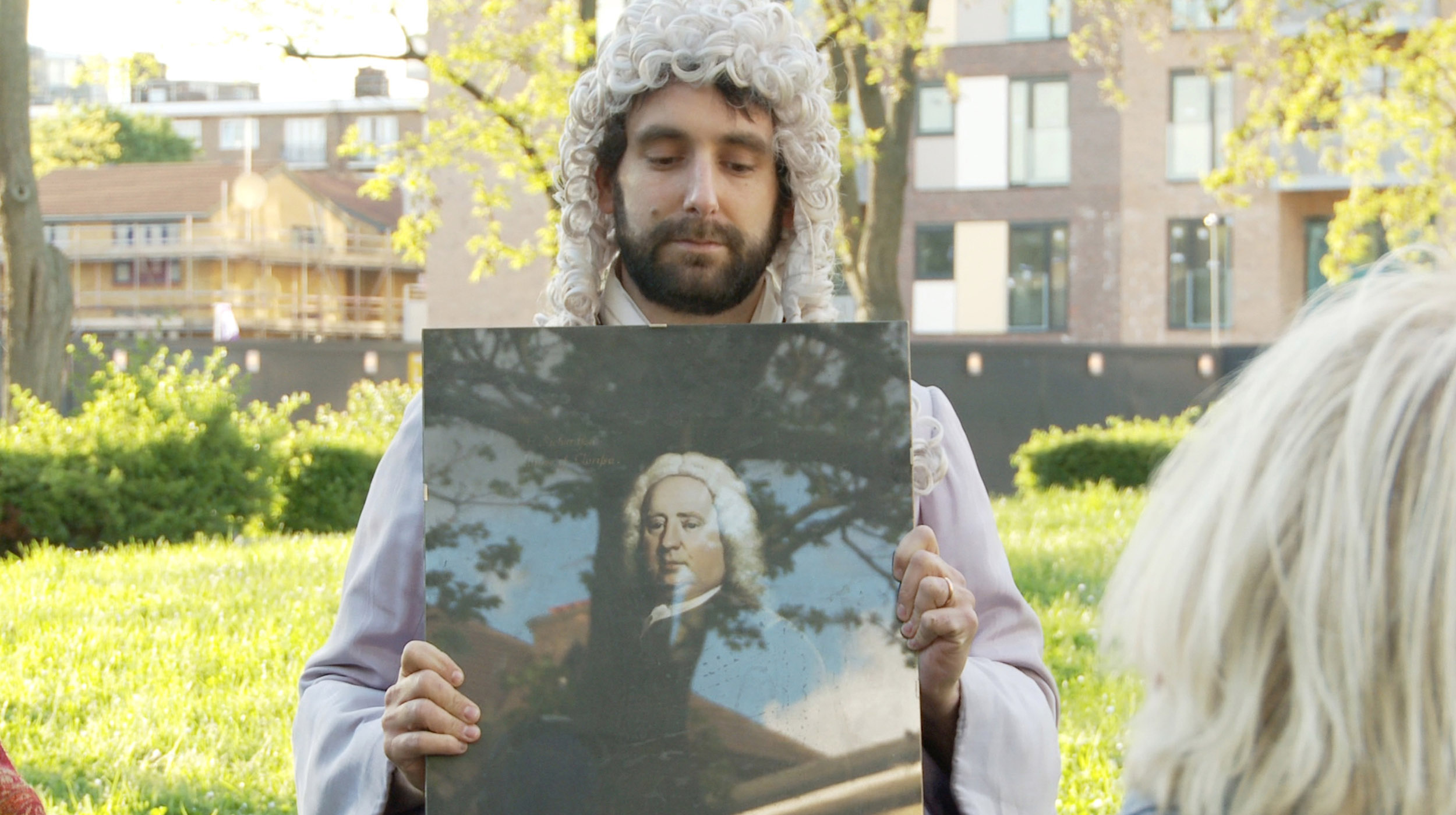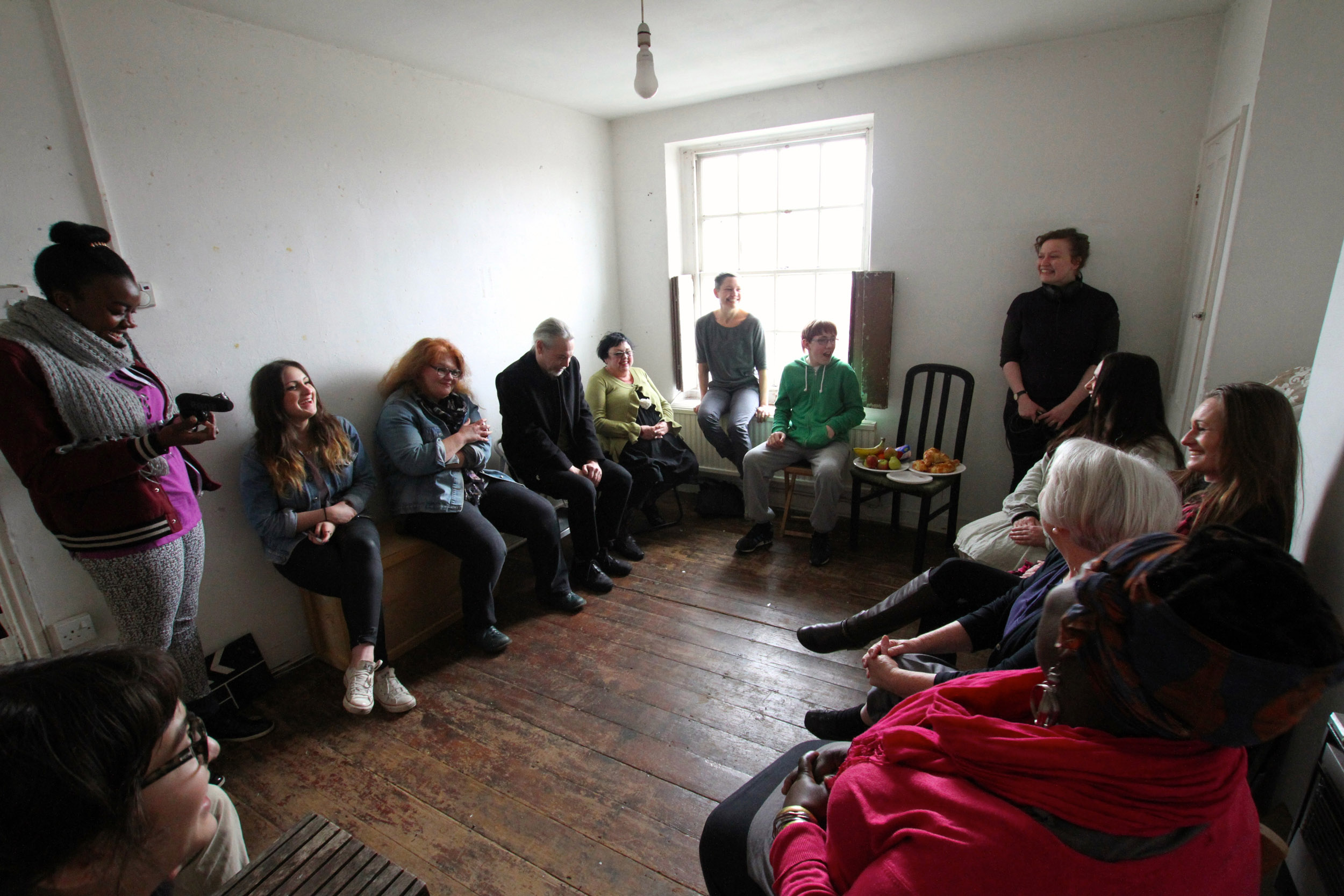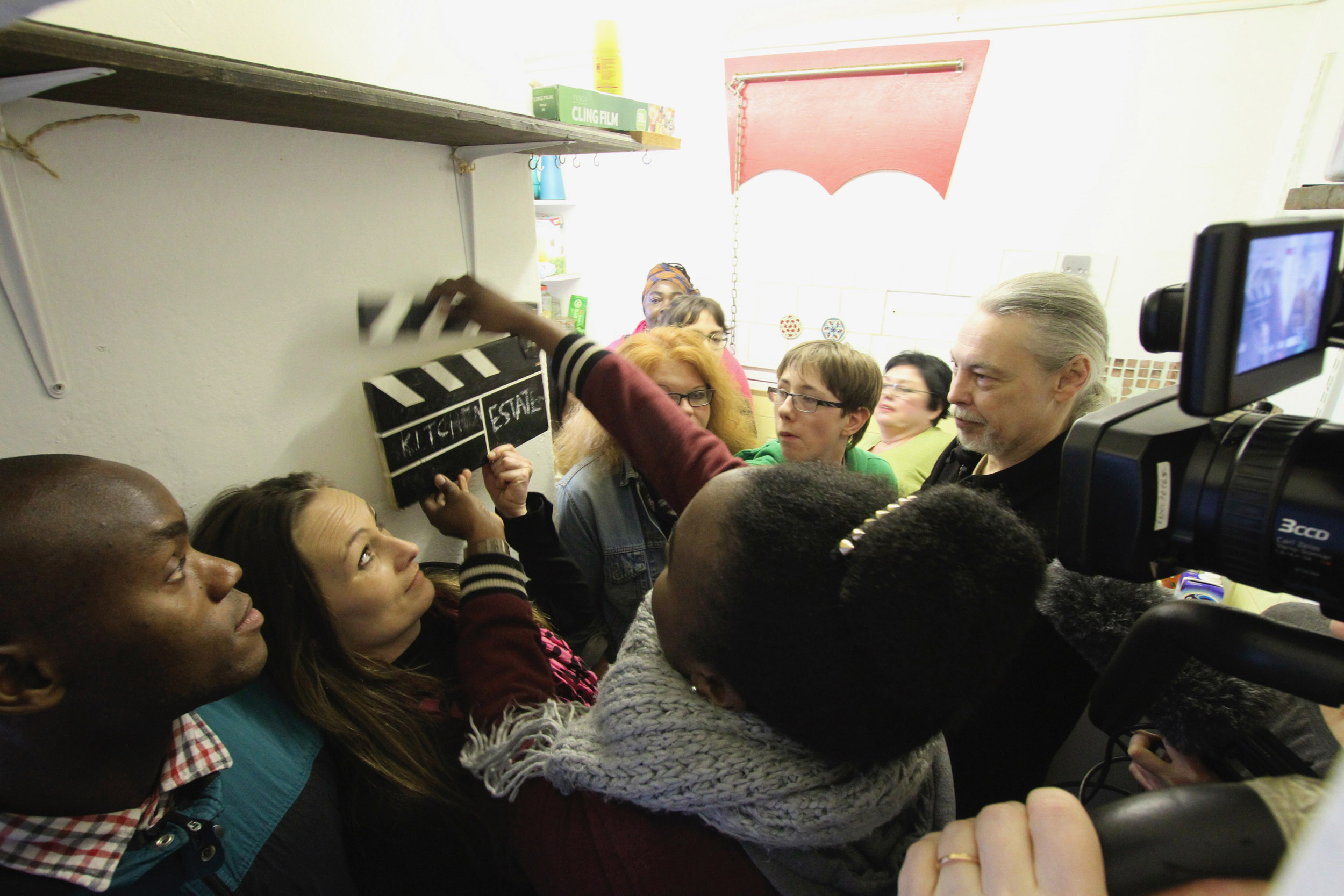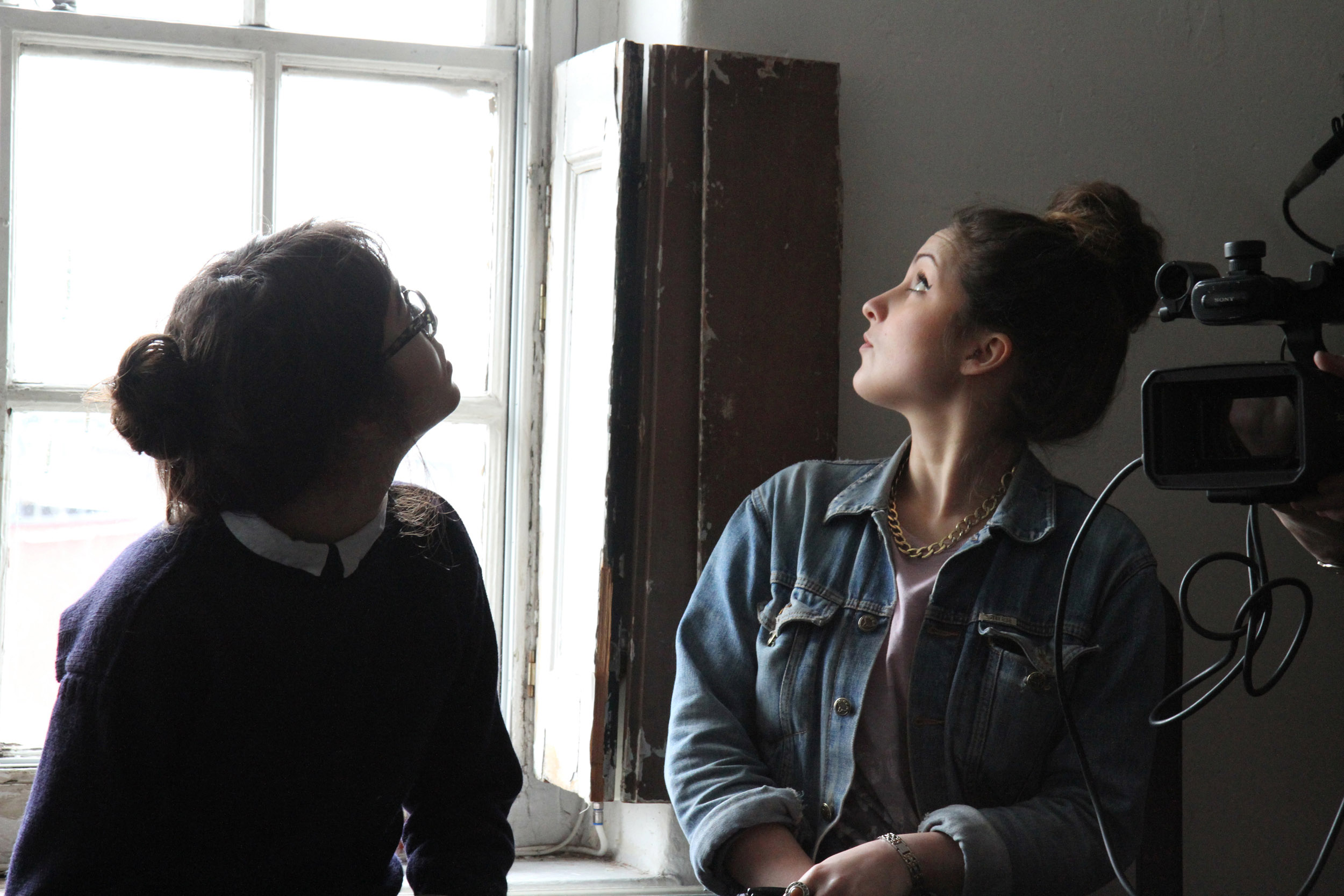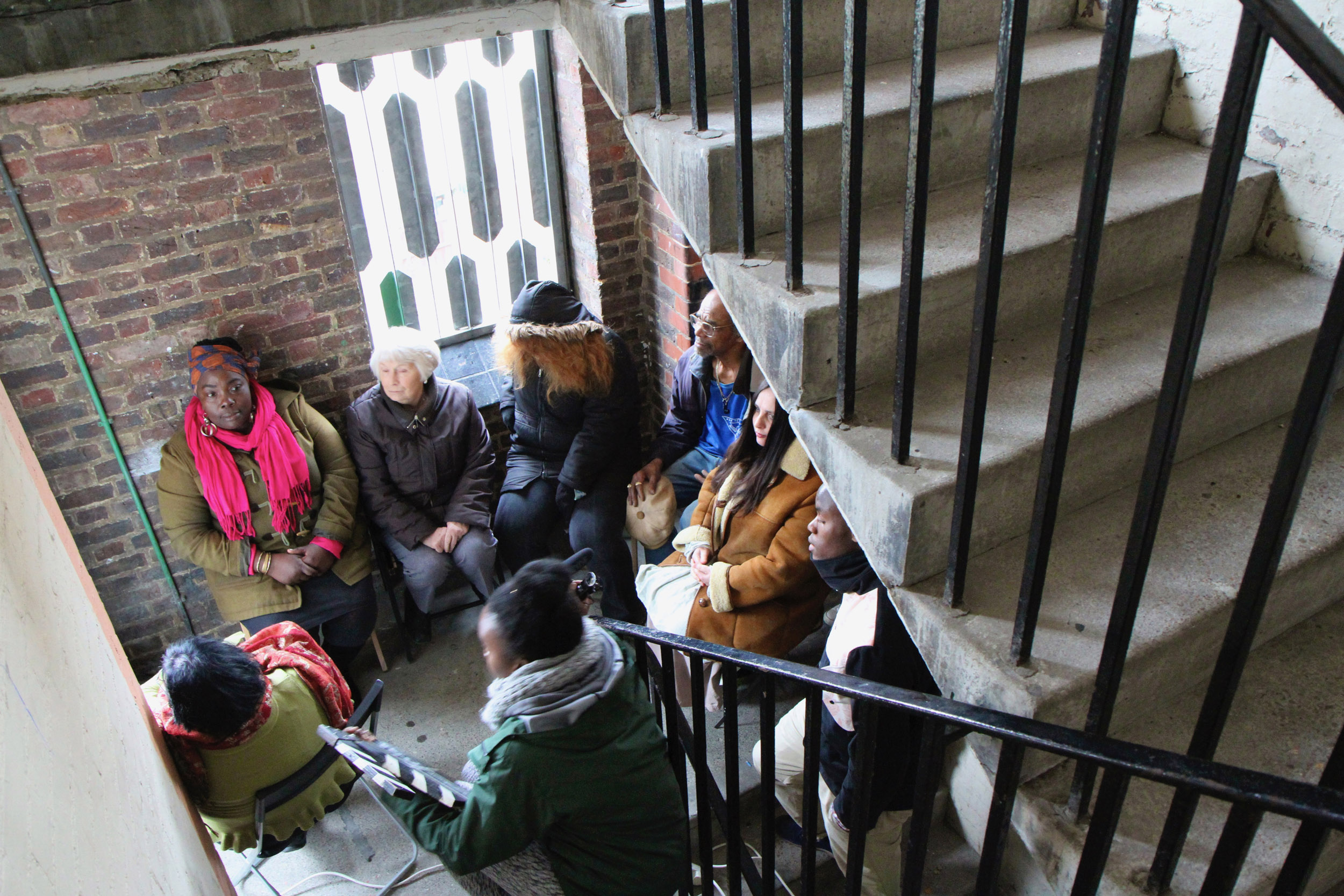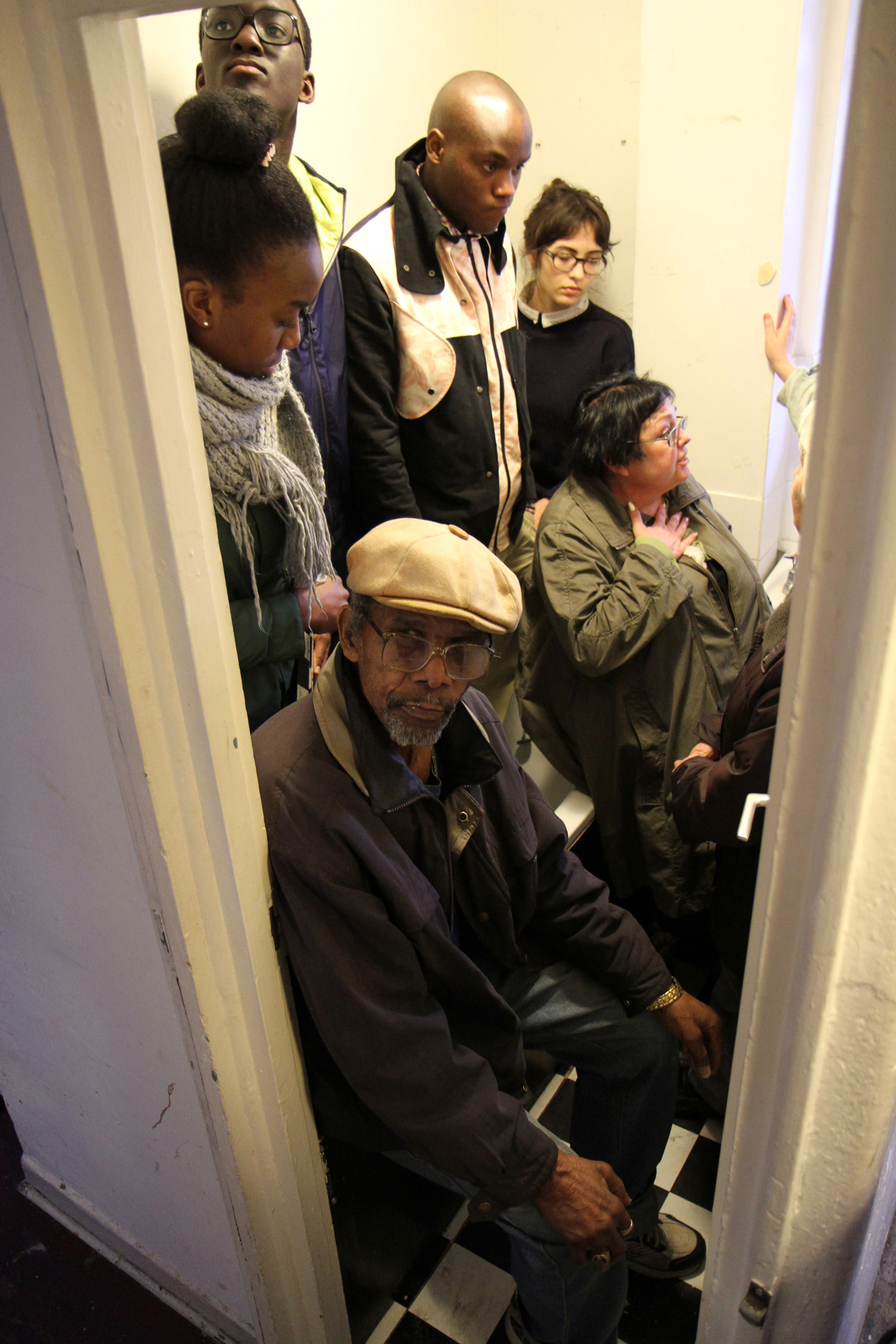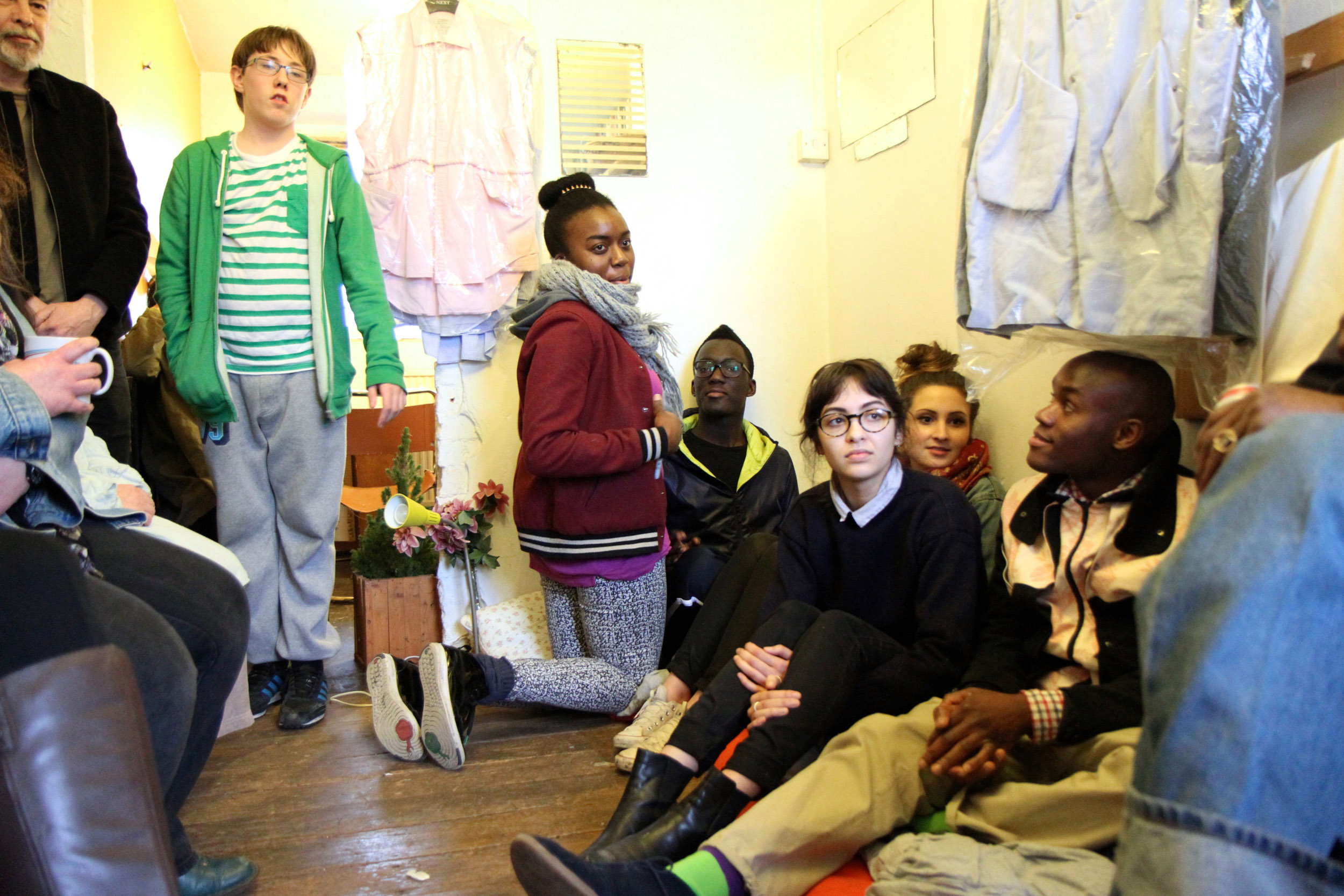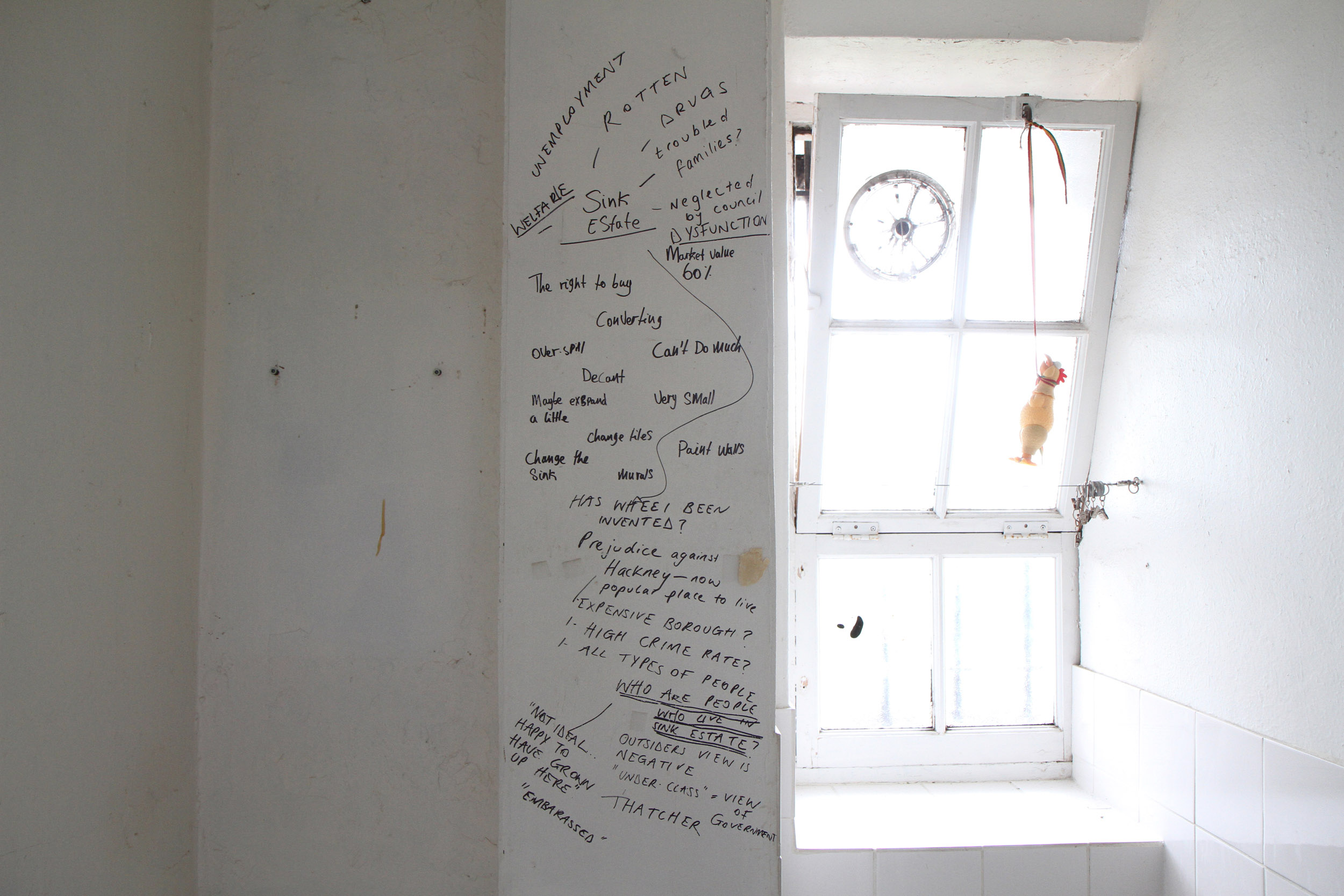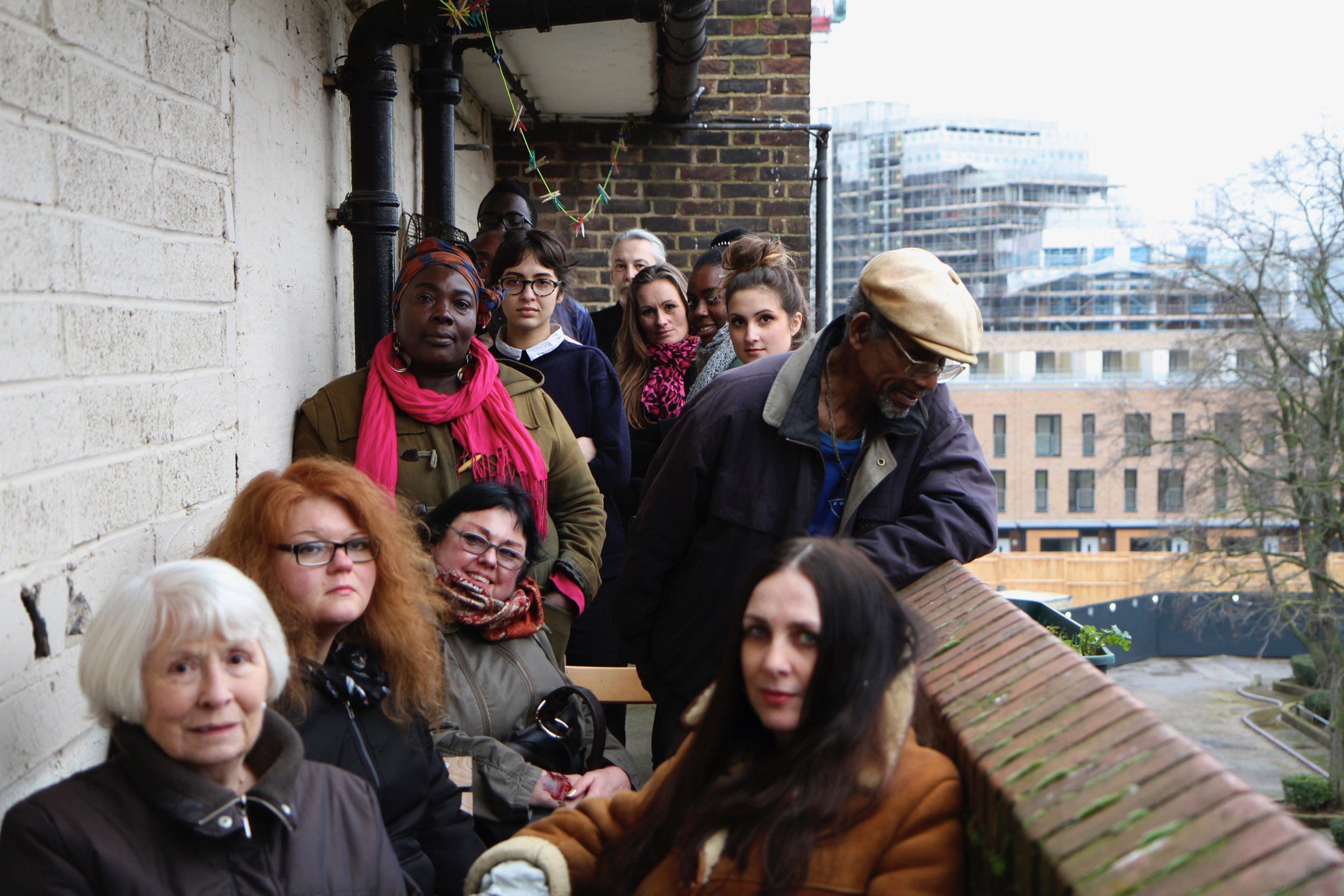Cite-Specific Workshops #1-12
I am developing a methodology of cite-specific workshops in which archival material and architectural literature is performed on the site that it addresses. It seeks to build different relationships where text and architecture is both tool and content, object and site of collaborative discussion.
I take inspiration from dramaturgy and devising to consider modes of narration and elicit collective responses. The workshops are staged on different spaces of the estates where the site becomes an active participant in conversations, choreographing encounter with the building and texts. I rebuild archives in situ, people can decide how to read it, making visible material - personal histories and objects - that they wouldn’t normally have access to.
Over the course of six weeks in the summer of 2012, I ran a sequence of six workshops, filmed by Andrea Luka Zimmerman, using performance as a medium for residents to gather, embody and enact Haggerston’s history, invoking original ideals and offering them for collective analysis against lived experience and critical texts.
As original plans and documents of the estate were unavailable, our workshops were inspired by the only fragments of the designers’ intent that remained, the names of the different blocks that comprised the estate - Lovelace, Pamela, Lowther, Harlowe, and Samuel - characters taken from the novels of 18th century author Samuel Richardson. Richardson was a devout Christian dismayed at the immorality of Georgian London. He wrote tales of virtuous heroines to reform readers socially and spiritually, in which each chapter takes the form of a letter to give the illusion of reality to fictitious characters and events. The decision by the London County Council to borrow these names implies a belief in moral improvement through their own architecture like Richardson’s, where the instrument of reform was not ink but brick.
We dressed in 18th century costume, like the estate’s neo-Georgian blocks, to embody Richardson’s protagonists. Inspired by his epistolary novels, each workshop began with a letter addressed to participants in the voice of different people who had influenced the nature and perception of the estate – the author, architect, journalist, and politician – written using methods of dramaturgy, devising and site-writing. The letters were accompanied by contextual literature and read aloud before opening to wider discussions, questioning the vision and virtue of Haggerston’s designers and Richardson’s heroines, and sharing opinions and expertise that cast aside stereotypes of this estate once unjustly labelled the ‘heroin capital of Europe’.
The second series of six filmed workshops took place in spring 2013 in which a wider group of current and former residents tackled the history of public housing in London. Instead of letters, each workshop began with a short lecture charting this history through key legislative Housing Acts. They were staged in different spaces of the estates, using archival and architectural material to choreograph an encounter between building and texts.
Critical questions came to life as we debated how each room, flat and block was made and is managed in response to a set of ideas, as identified by Matrix Feminist Cooperative, about how society works, who does what, and who goes where. Oscar Newman’s highly influential defensible space theory was disputed beside security railings on an access gallery. Marion Roberts’ historical analysis of how housing design is inflected by gender was considered whilst crowded around the stove. This negotiation of alternative histories informed by everyday experience challenged that most common biography of housing estates propagated by the media - an abrupt descent from utopian golden age to dystopian reality - which presents a narrative that appears closed and finite, a premature announcement of the death of public housing.
These collaborative methods conceptually and physically bring ideas and people together on site. When we exhibit the work and screen the film we reveal the socio-economic effects of spatial changes, celebrate the richness of residents’ knowledge, share experiences and resources with other communities of interest, and show those who claim to build ‘lively’, ‘diverse’ and ‘vibrant’ communities through regeneration schemes that these communities are already here.
Reviews
An exemplary piece of research and archivism, the original approach of using archival material in resident workshops has the potential to be a model for similar engagements elsewhere, RIBA Award Panel, 2016.
References
Published as Roberts, D. et al. (2016) ‘From “Heroin” to Heroines’, in Campkin B. and Duijzings G. (eds.) Engaged Urbanism: Cities and Methodologies, London: IB Tauris, pp. 73-82.
